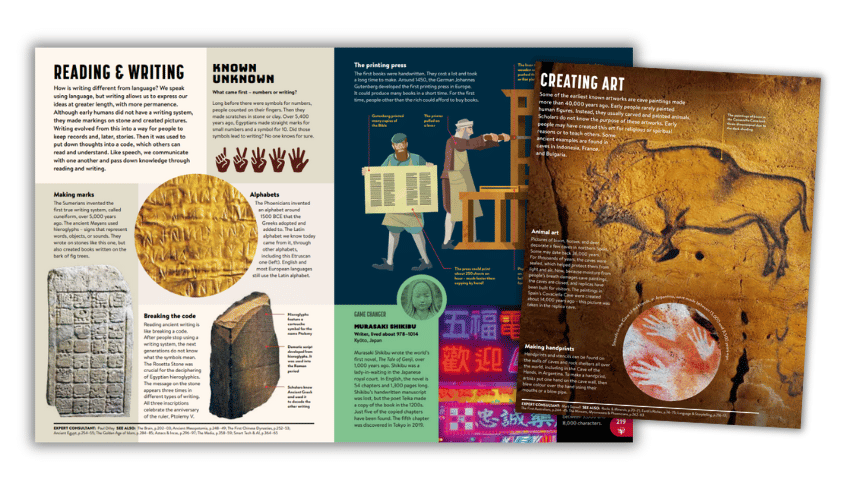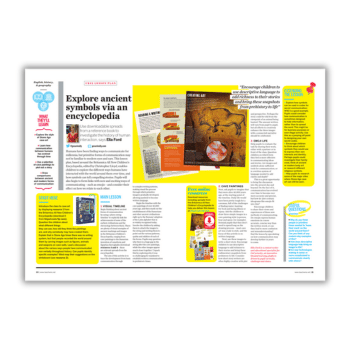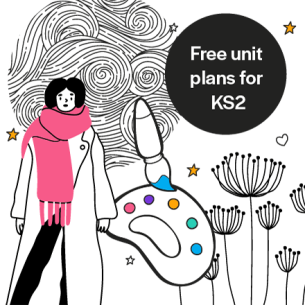Use spreads from a reference book to investigate the history of human interaction with this lesson plan about Stone Age art…
Humans have been finding ways to communicate for millennia. However, primitive forms of communication may not be familiar to modern eyes and ears.
This UKS2 cross-curricular lesson plan is based around the Britannica All New Kids’ Encyclopedia, edited by Christopher Lloyd. It enables children to explore the different ways humans have interacted with the world around them over time, and how symbols can tell compelling stories.
Pupils will also begin to form links with new and exciting ways of communicating – such as emojis. They’ll also consider their effect on how we relate to each other.
This download contains
- Complete PDF lesson plan
- Spreads from the Encyclopedia to use in the lesson
- ‘Art to Alphabet’ mind map

Stone Age art learning objectives
- Explore the style of Stone Age art in caves
- Learn how communication between humans has evolved through time
- Use a selection of cave paintings to plot out a story
- Draw comparisons between ancient and modern forms of communication
Starter activity
Introduce the class to Stone Age art by displaying resource 1 from the Britannica All New Children’s Encyclopedia (included in this download).
Question the children about what different things they can see, how old they think the paintings are, and why somebody may have created them.
Explain that in Stone Age times there was no writing system, but that people recorded the world around them by carving images such as figures, animals and weapons on cave walls.
Lead a discussion about the various ways people have communicated non-verbally throughout history. Can pupils identify specific examples? Mind map their suggestions on the whiteboard (see resource 2).
Ella Ford is a content writer and educational specialist for GoCuriosity, an innovative blended learning platform driven by pupil curiosity, challenge and choice.













